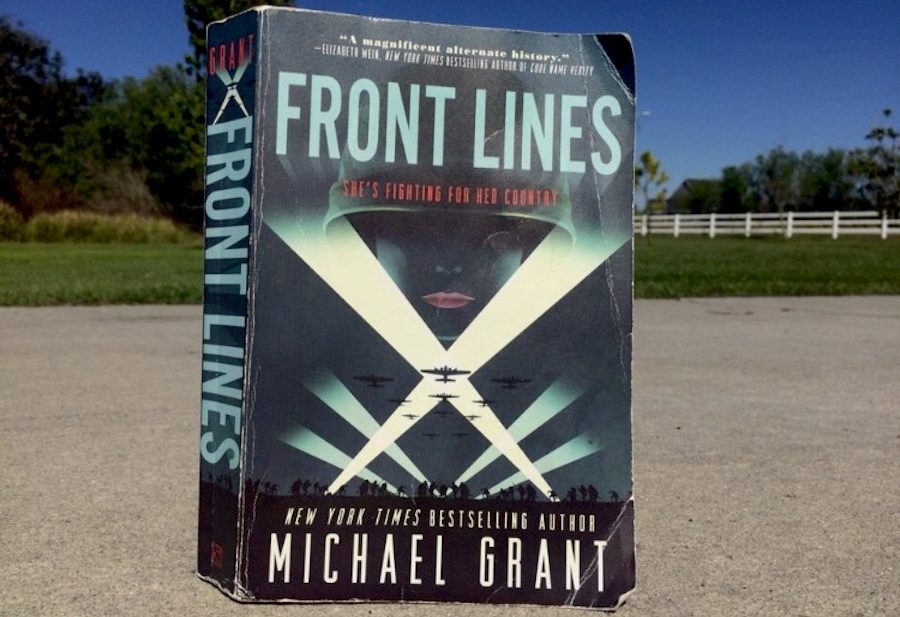Not Just Another War Story: “Front Lines” review
February 27, 2018
“Front Lines” is a gritty war novel, which explores the heartache and struggles of being underestimated and undermined as a soldier. The story follows three young women as they enlist to fight for America in World War II.
As the story unfolds, the author, Michael Grant, skillfully switches between the perspectives of each of the girls. Rio Richlin is a girl from Nowhere, California, who enlists after her sister is killed in action. Frangie Marr is an African-American who aspires to go to college and become a doctor, but settles for an Army Medic instead. Last but not least is Rainy Schulterman, a Jew from New York who just really wants to kill Hitler.
The reader follows the girls as they suffer through basic training, and eventually all end up on the same battlefront in Tunisia. Beyond training exercises, the girls also must work hard to earn the respect of their male counterparts, which proves to be no easy job.
The characters all have different experiences, and their stories intertwine only briefly, but Grant manages to keep each plot point relevant and engaging. The reader finds him or herself rooting for the characters, celebrating their victories and condemning their defeats.
Grant does not sugarcoat any details of battle. The surroundings and personal feelings of the characters are all described in detail. After reading the book, the reader will have a new respect for what it means to be a soldier, and understand just how traumatic battlefield experiences can be.
There are currently two more books in the “Front Lines” series. “Silver Stars” follows the girls as they travel to Italy to confront the Germans yet again. “Purple Hearts,” which came out very recently, describes the events of D-Day from the perspectives of Rio, Frangie, and Rainy. Grant has also written two novellas, both set in the “Front Lines” universe, one following a female journalist, the other a training exercise Rio and her team must complete.
“Front Lines” leaves no detail unexplored, and gives readers an alternative history that provides good, hard look at what life could have been like for female soldiers during World War II.



